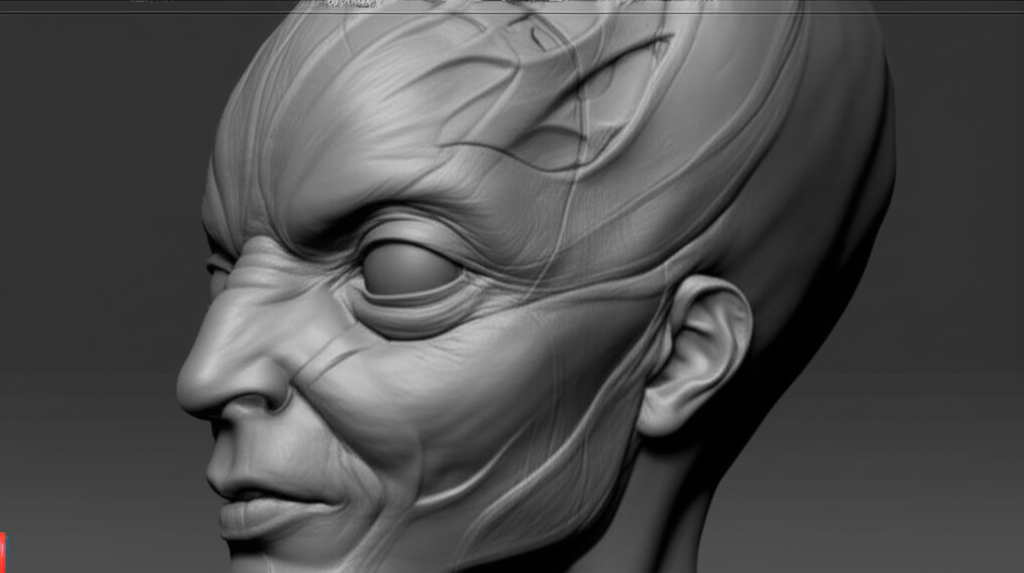ZBrush, the industry-leading 3D modeling software, has revolutionized the way artists sculpt and paint digital creations. Its powerful tools and intuitive interface empower both beginners and seasoned professionals to craft breathtakingly detailed models, seamlessly blending traditional sculpting techniques with cutting-edge digital technology. From concept artists and game developers to filmmakers and jewelry designers, ZBrush’s versatile nature has made it an indispensable tool across a wide array of creative fields.
This article delves into the key features and capabilities of ZBrush, exploring why it remains the go-to choice for many of the world’s top digital artists. We’ll discuss its strengths and weaknesses, highlighting its unique workflow and impressive range of functionalities. Whether you’re a curious newcomer or an experienced 3D artist considering a switch, this exploration will provide a comprehensive overview of this remarkable software.
Understanding ZBrush’s Core Strengths
ZBrush sets itself apart through its unparalleled focus on digital sculpting. Unlike polygon-based modeling programs which rely on manipulating vertices and faces, ZBrush employs a unique pixel-based approach. This allows for incredibly high resolutions and phenomenal detail, enabling artists to create nuanced forms and textures with remarkable realism. This method makes the process feel more intuitive and organic, mirroring the experience of traditional sculpting with clay or wax. The immediate feedback and tactile responsiveness help artists intuitively develop their ideas, resulting in a more fluid and expressive workflow.
One of ZBrush’s most remarkable features is its dynamic brush system. This offers a vast array of brushes, each with customizable properties, allowing artists to simulate various tools and mediums. From sculpting brushes that mimic clay to painting brushes that replicate oil paints, ZBrush empowers artists to achieve remarkable levels of detail and realism. The ability to sculpt, paint, and texture entirely within the same program further streamlines the workflow, significantly reducing the need for external software.
Mastering the Art of Digital Sculpting in ZBrush
The software’s intuitive interface, despite its powerful capabilities, is relatively user-friendly. While it does have a steep learning curve, abundant tutorials and online communities provide ample support for learning the ropes. Numerous training resources, ranging from beginner-friendly guides to advanced masterclasses, are available to help users master the intricacies of ZBrush. This commitment to accessible learning makes it suitable for both hobbyists and professionals alike.
The software further shines through its powerful masking and selection tools. These tools allow for precise control over sculpting and painting processes, only affecting specific regions of the model. This enables artists to achieve extremely fine details and subtle nuances without affecting the overall form. This level of precision is crucial in creating realistic characters, intricate objects, or highly detailed environments.
Advanced Techniques and ZBrush’s Powerful Features
Beyond basic sculpting and painting, ZBrush boasts a range of advanced functionalities. These include tools for retopology, texturing, rendering, and even animation. Retopology, for instance, allows artists to create clean, low-polygon meshes from high-resolution sculpts, making them suitable for game engines or 3D printing. These features make ZBrush a complete 3D modeling solution, minimizing the need for multiple software packages and streamlining the entire production pipeline.
The software facilitates complex workflows effortlessly. For example, it supports importing and exporting models in various formats, making it compatible with other popular 3D software. This interoperability is a significant advantage, allowing artists to integrate ZBrush seamlessly within their existing workflows.
The Limitations of ZBrush
While ZBrush is a remarkably powerful software, it’s not without its limitations. Its primary focus on sculpting can mean a less robust approach to polygon modeling compared to dedicated software like Maya or Blender. The high-resolution nature of ZBrush models can also result in large file sizes and potentially slower performance on less powerful machines. Learning the software’s intricacies requires a significant time investment, and the initial learning curve can be challenging for absolute beginners.
Conclusion: ZBrush – An Indispensable Tool for 3D Creation
Despite its limitations, ZBrush remains the benchmark for digital sculpting software. Its intuitive approach to sculpting, combined with a powerful array of features and tools, empowers artists to create stunningly detailed and realistic 3D models across an extensive range of applications. Whether you aspire to create realistic characters for films, intricate game assets, or detailed product designs, mastering ZBrush can significantly enhance your skills and creative potential, transforming the way you approach 3D art. While the initial learning curve might seem daunting, the rewards of harnessing its power are immeasurable for any serious digital artist.
